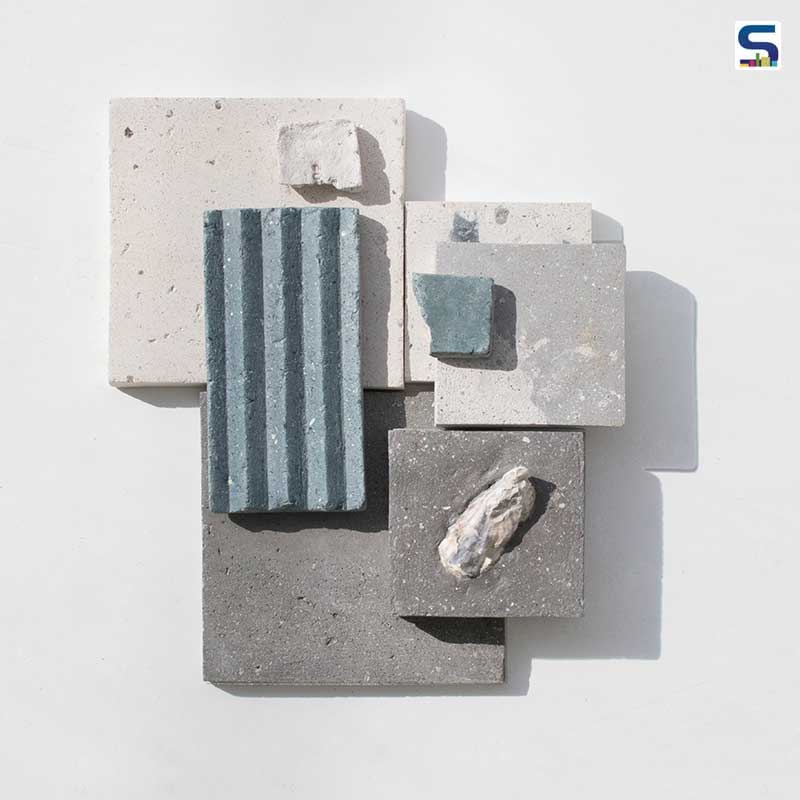
Composed of discarded seashell powder and natural, non-toxic ingredients such as sand, mineral soil and so on, Sea Stone is a sustainable material that features solid, hard and textural properties of stone and concrete.
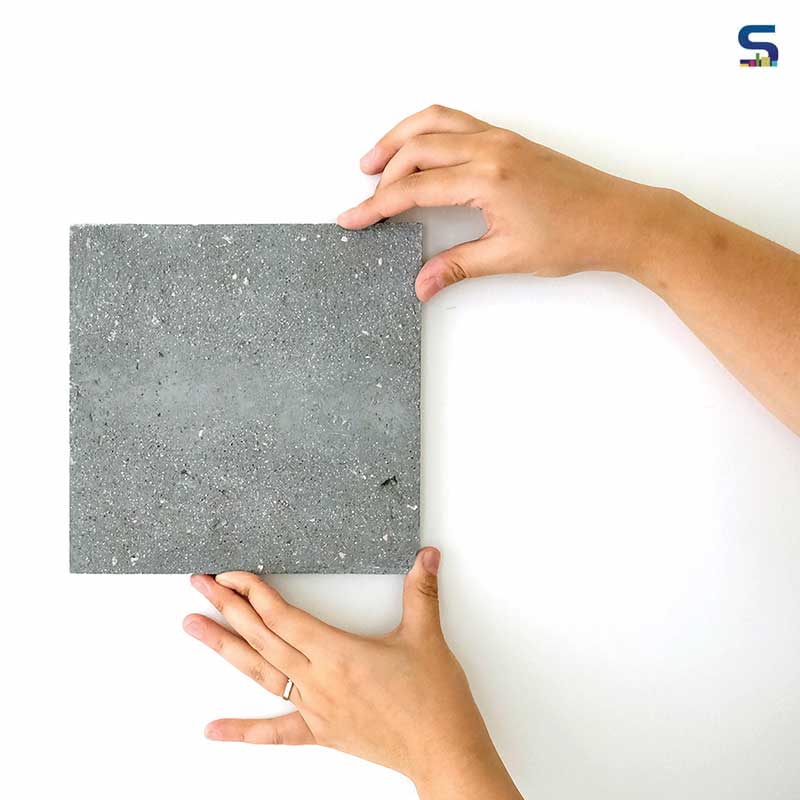 Sea Stone is a sustainable material that features solid, hard and textural properties of stone and concrete.
Sea Stone is a sustainable material that features solid, hard and textural properties of stone and concrete.
Nearly 7 million tons of seashells every year are discarded by the seafood industry and aquaculture. Despite some seashells being recycled and used as fertilizers, a majority of them are dumped into landfills or thrown by the seaside. These discarded seashells, which are uncleaned or rotten, do not get cleared and start piling up near beaches. This causes odour pollution and pollutes the surrounding land in the long run.
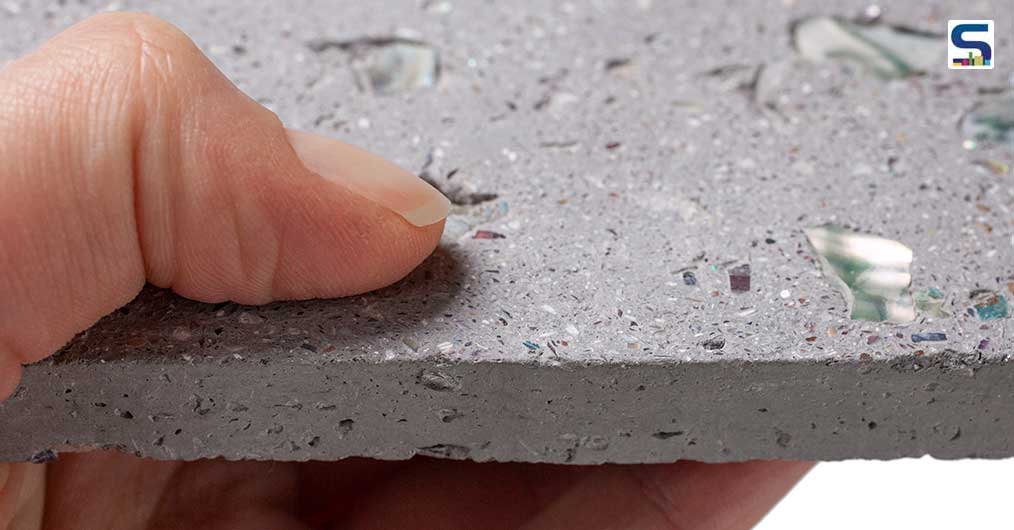 Studio newtab-22’s designer duo Hyein Choi and Jihee Moon saw the potential in discarded seashells.
Studio newtab-22’s designer duo Hyein Choi and Jihee Moon saw the potential in discarded seashells.
Studio newtab-22’s designer duo Hyein Choi and Jihee Moon saw the potential in this discarded material. “These shells are materials with high potential, consisting over 90 per cent calcium carbonate, similar to the one that is found in limestone,” informs the duo.
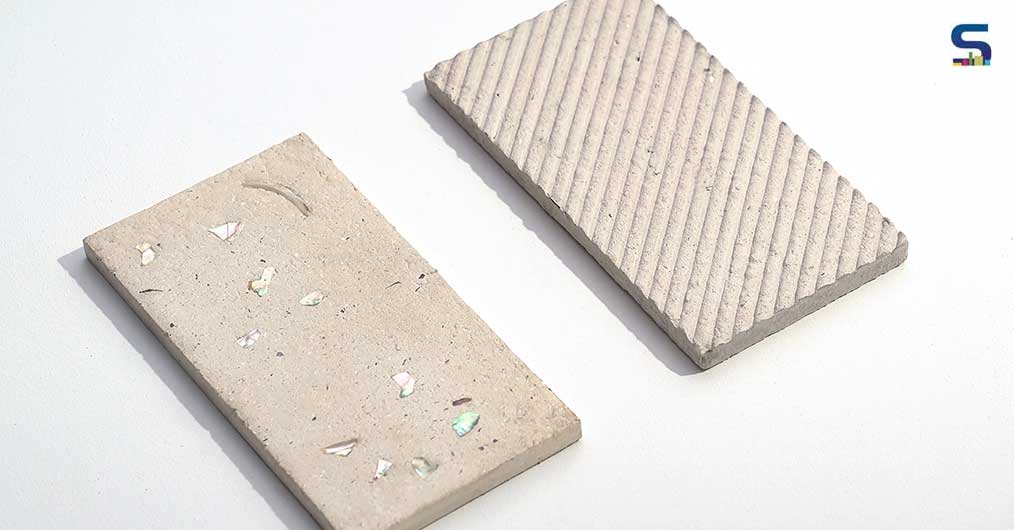 Project Sea Stone proposes the use of discarded seashells to create environmentally and economically sustainable material.
Project Sea Stone proposes the use of discarded seashells to create environmentally and economically sustainable material.
Brainchild of Choi and Moon, project Sea Stone proposes the use of discarded seashells to create environmentally and economically sustainable material leaving a positive impact by reducing waste disposal costs, preventing marine pollution and recycling waste by creating value-added products with artistic, aesthetic and functional new uses.
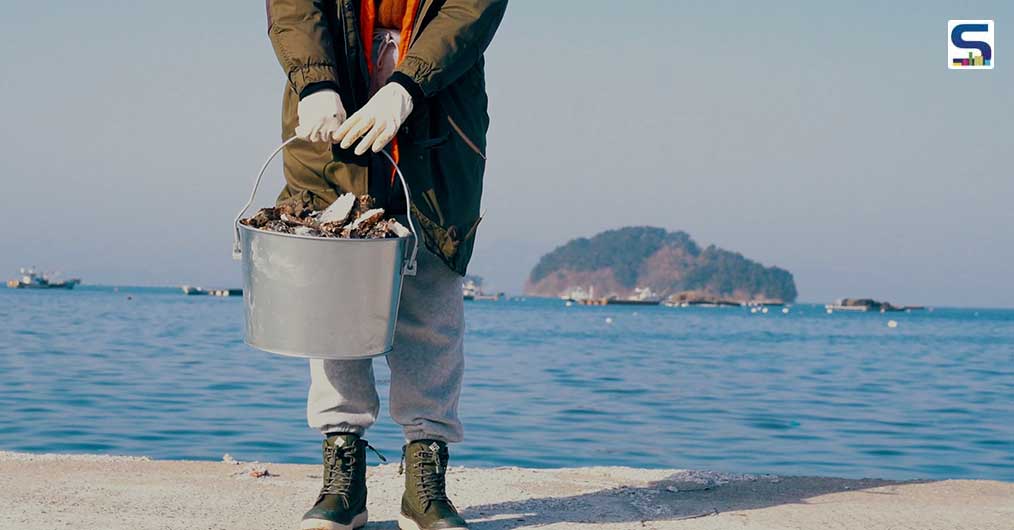 The designers collect discarded seashells from seafood industries (aquafarm) and restaurants in a large volume.
The designers collect discarded seashells from seafood industries (aquafarm) and restaurants in a large volume.
The designers tell us, “The project was started with the curiosity of how we could turn wasted seashells into useful resources and suggest various possibilities from this result. We have put our huge effort into implementing the material Sea Stone to be used in real life.”
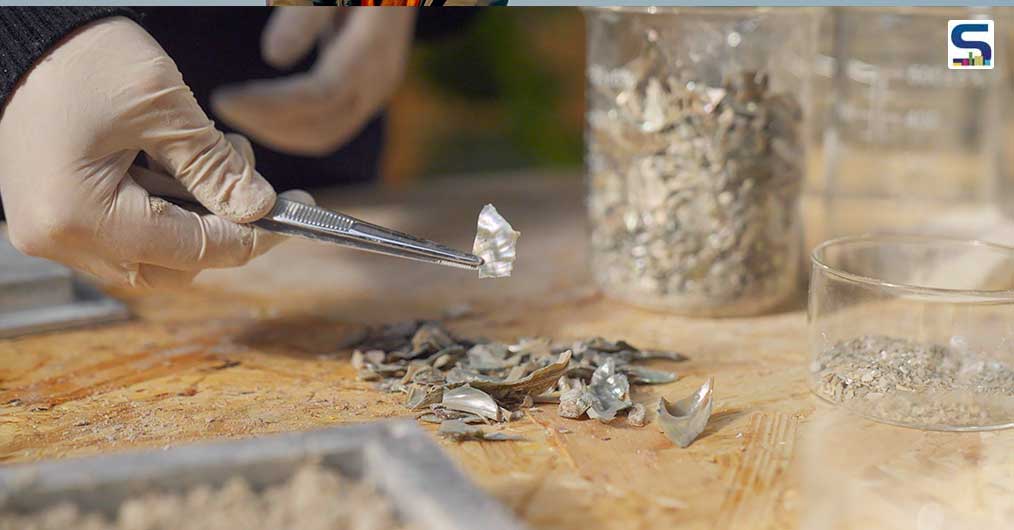 The size of the particles, colour and hand-working makes each piece different from the other.
The size of the particles, colour and hand-working makes each piece different from the other.
The designers collect discarded seashells from seafood industries (aquafarm) and restaurants in a large volume. The shells are thereon processed, ground and mixed with other materials such as sand, mineral soil and so on, following Studio newtab-22’s recipe which had been developed and investigated for over a year. The mixture maximizes the benefit of the materials, as well as textures and hardness. The size of the particles, colour and hand-working makes each piece different from the other.
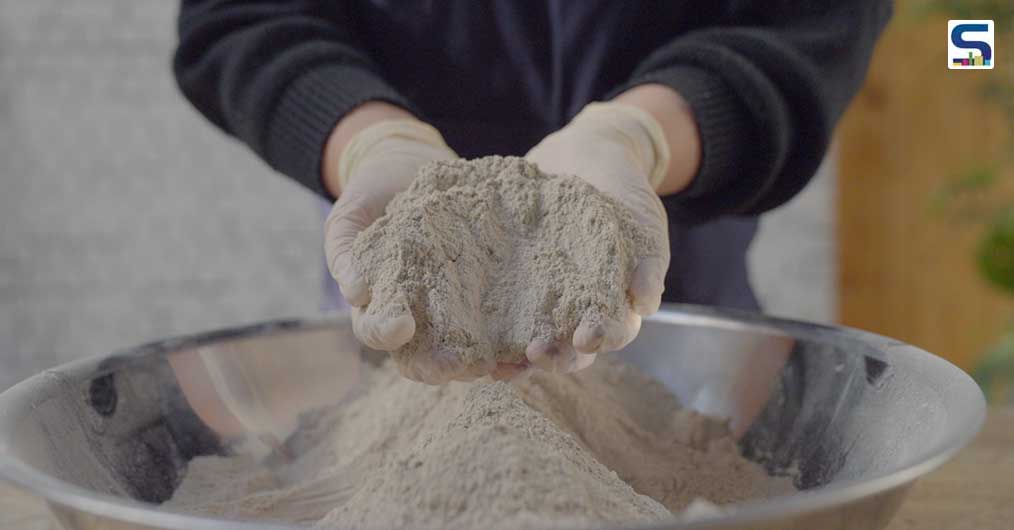 The designers have started producing decorative tiles and interior products such as mirrors, vases, candle holders.
The designers have started producing decorative tiles and interior products such as mirrors, vases, candle holders.
The duo is now closely connected with the aquaculture industry in Korea in an attempt to continuously find sustainable ways of utilising resources and manualising the making process by embracing machines and other equipment. The result of which is a small-scale size of decorative tiles and interior products such as mirrors, vases, candle holders, to name a few. “We intend to integrate Sea Stone to the connection from the debris state to the beautiful home interior objects so that you can see the discarded shells had done their long journey,” adds Choi and Moon.
Image credits: Studio newtab-22
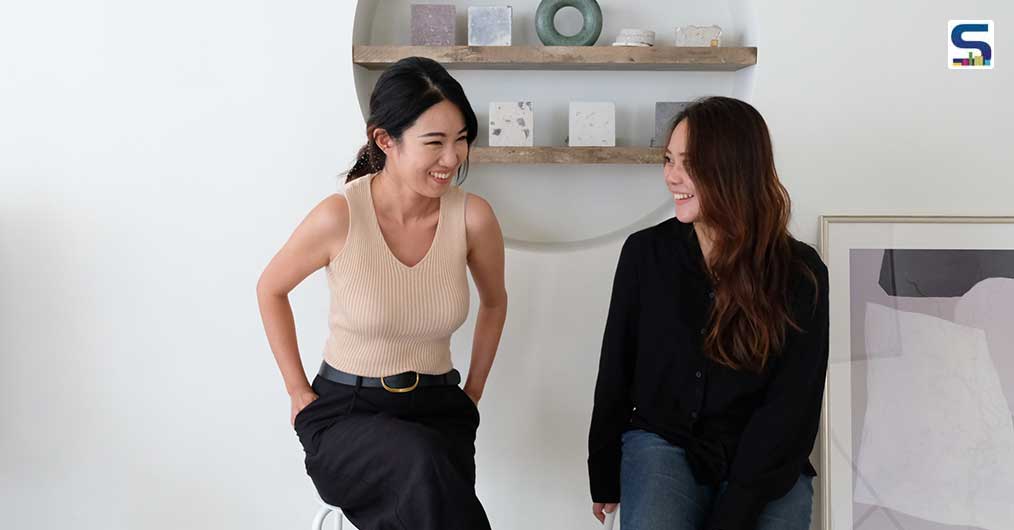
About the designers
Hyein Choi and Jihee Moon are Studio newtab-22, a designer duo based in Seoul and London, started from Royal College of Art 2019. They are interested in natural, new or overlooked materials. The duo seeks the beneficial and intriguing properties of the materials, trying to bring them into modern life with our design. They aim to critically bring sustainability into society with the outcome of our work. Studio newtab-22 suggests the possibilities for today and tomorrow, facilitating innovative experiments while following the aesthetically pleasing aspect of nature itself.